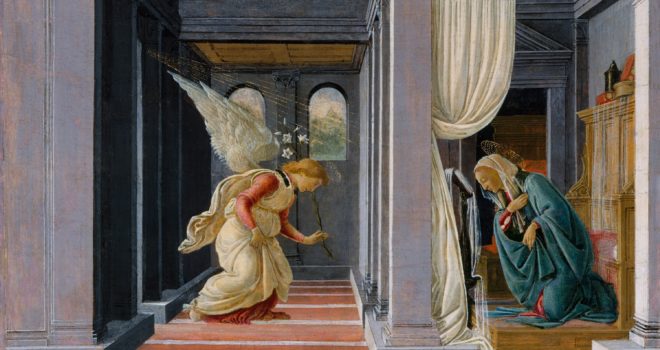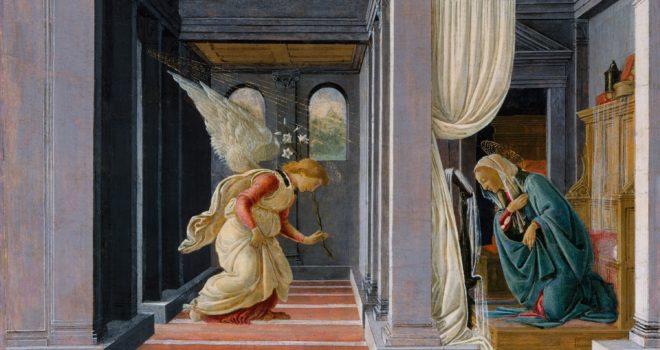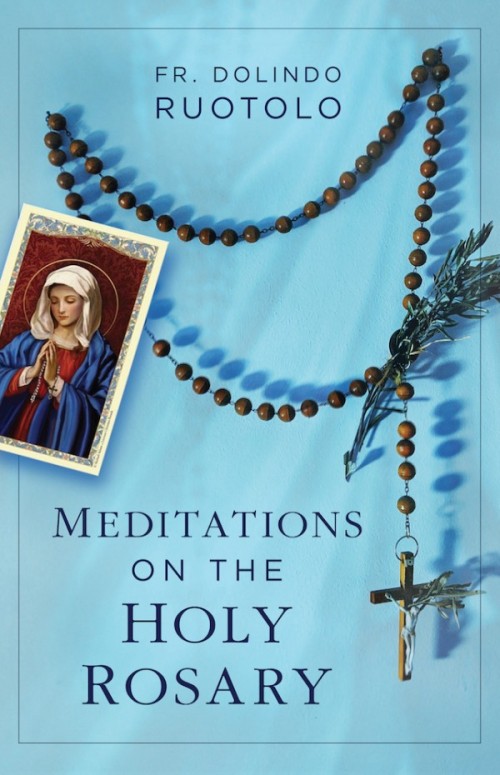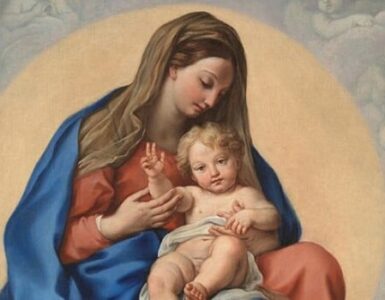In each mystery of the Rosary there is a spiritual orientation for the soul that raises it to love more and better and traces for it a path of virtue.
The Joyful Mysteries
In the First Joyful Mystery, the Annunciation, the soul remembers its vocation in life and offers itself to the Will of God:
Ecce ancilla Domini. “Behold the handmaid of the Lord.” This is true no matter what its state of life may be. It is especially true for souls consecrated to God and those who have great responsibilities, such as parents and those who hold high public office. For young people who do not have these responsibilities, prayer and contemplation of the first mystery direct them into the uncertainty of the future with a resolve to do the Will of God.
The soul also prays for reparation, because every prayer can have the power to amend and compensate for the sins of those who live as sheep disturbed by their passions—or, even worse, in rebellion against the Will of God. The Ecce ancilla Domini of Mary had this value of reparation because she is the second Eve, just as Jesus is the second Adam, and Mary makes amends for the rebellion of the first Eve, submitting her will to the Will of God.
In the Second Joyful Mystery, the Visitation to St. Elizabeth, the soul learns from Mary the charity that is active and the love that gives to God every honor and glory. It becomes prompt to aid others, to pray for them, and to share the gifts that it received from God. Instead of growing proud, it gives all glory only to God.
In the Third Joyful Mystery, the Birth of Jesus, the soul adores the Divine Redeemer as a Child, unites itself to the choir of angels, and offers to Jesus its gifts, as did the shepherds and the Magi. It makes reparation in this way for its own ingratitude toward Jesus and that of others. The soul offers itself to Him with the loving tenderness that the little Newborn inspires.
In the Fourth Joyful Mystery, the Presentation, the soul offers itself to God with Mary, enriched by the merits of the Eucharistic Jesus. The soul also offers to Him, like two doves of loving sacrifice, the soul and the body, together with Mary in her offering of the two doves as she presented her Son in the Temple.
Mary offered the gift of poverty, in the humility of her heart, and this gift replaced the lamb, the offering of the rich. It was all so logical. Mary, in fact, offers in the Temple the true Lamb of God, and she offers herself and St. Joseph, most pure, as two doves. Two doves and one Lamb. The soul, in its sacrifice as a victim soul, offers itself to God with Jesus: it offers the suffering of its body and spirit as two doves.
Considerations of the Soul in the Mysteries of the Rosary
In the Fifth Joyful Mystery, the Finding of the Child Jesus in the Temple, the soul accompanies Mary in the pain of having lost Jesus and in the joy of finding Him again. The soul considers what a loss it is to neglect Jesus in its own life because of its sins and how necessary it is to find Him again in the temple of God with the Sacrament of Reconciliation. The soul thinks of others, too, and of the nations that have lost Him, and unites itself to the sorrows of Mary. She endured so much, making amends for poor and wretched souls deprived of Jesus, inept in their thoughts and cheated by the bad influence of the world around them.
It is scientifically proven that the wristwatches of those who work near electrical currents — television, radio, and so on — become magnetized and indicate nonsensical times when the balance wheel is made of steel. Likewise, souls that have gone astray by errors and vices are in contact with the world and satanic influences. Those devastating influences magnetize them, so to speak. They can no longer reason and become disoriented by their own deprivation; they do not display the times of God indicated on the heavenly dial and by the course of the sun. The soul prays to Mary, who found Jesus in the Temple among the doctors of the law, that in her immense sorrow, all souls and depraved nations may find Jesus in the Church and her doctrines.
✠
Editor’s note: The above excerpt is taken from Meditations on the Holy Rosary, available now from Sophia Institute Press.













